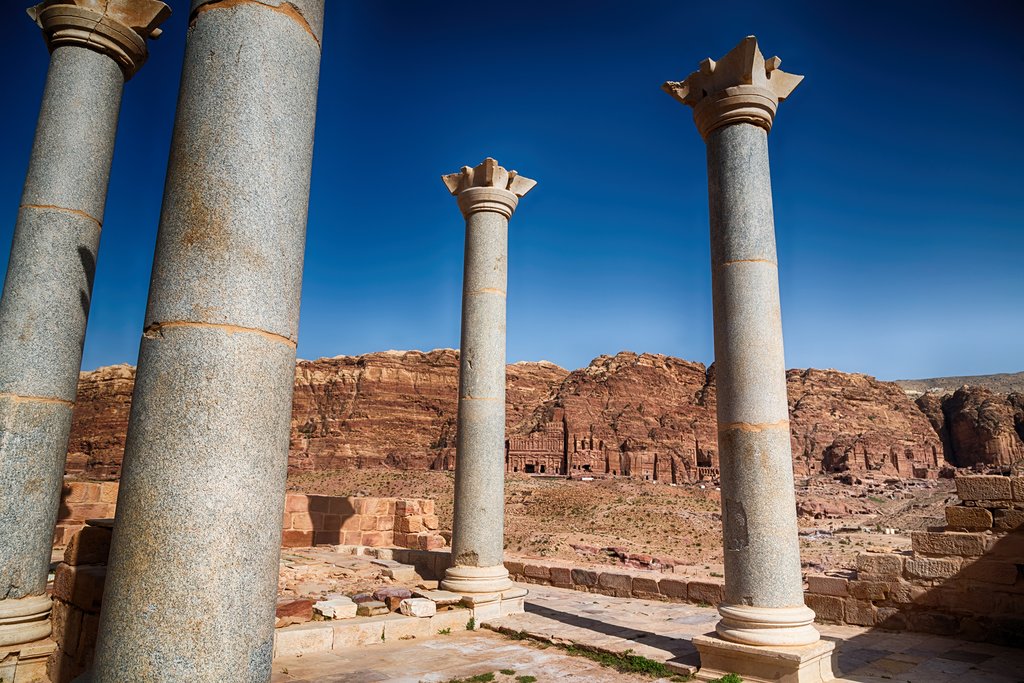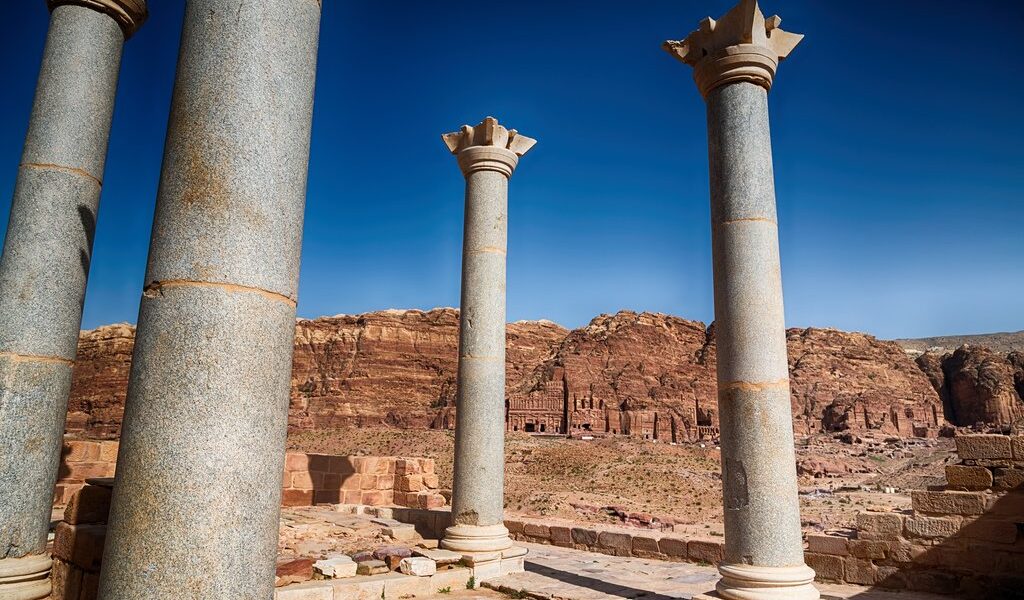
The hot, dry summer is at its peak, with August being the hottest–and very hot!–month, when colors get bleached out of the landscape. But don’t let this put you off. You get to explore Petra in virtual solitude, as the tourist hordes shun the heat. Plus, the dark desert nights provide a pitch-black canvas for watching the annual Perseid meteor shower.
## Weather in Petra During August
August, alongside July, claims the title of the hottest month in Petra. The average high temperature soars to a scorching 91°F (33°C). Prepare yourself, however, as temperatures can occasionally surge even higher, reaching a sweltering 105°F (40°C) or beyond. History suggests that August 2nd is statistically the hottest day of the year. The intense heat might seem daunting, but fortunately, the summer air in Petra possesses a dryness that can make it surprisingly bearable. Rainfall is virtually nonexistent in August, contributing to the arid conditions. While many find the dry heat manageable, it’s crucial to consider the potential impact on your fellow travelers. Individuals traveling with young children or elderly companions might find the relentless heat of August to be overwhelmingly intense and potentially uncomfortable. Careful planning is paramount to ensuring a pleasant experience for everyone.
To mitigate the effects of the high temperatures, it’s highly recommended to commence your exploration of Petra as early as possible. Aim to arrive when the entrance gates open at 6 am. This allows you to take advantage of the cooler temperatures that prevail during the early morning hours. Embrace the local customs and traditions by following the lead of the residents of Wadi Musa. During the early afternoon, when the sun is at its peak, seek refuge in shaded areas to relax and escape the intense heat. A particularly inviting option is the restaurant situated towards the far end of the ancient city of Petra, conveniently located near the starting point of the uphill trek to the Monastery.
Selecting appropriate clothing is essential for navigating the August heat. Opt for a lightweight and loose-fitting wardrobe that provides ample protection from the sun’s harsh rays. A wide-brimmed hat is an absolute must-have to shield your face and neck from direct sunlight. Don’t forget to pack sunglasses to protect your eyes and a high-SPF sunscreen to safeguard your skin from sunburn. Staying hydrated is of utmost importance. Ensure you drink copious amounts of water throughout the day to combat dehydration and maintain your energy levels.
## Crowd Levels and Travel Costs
Interestingly, the peak of summer witnesses a decline in international visitors to Jordan. As a result, Petra, typically teeming with tourists, experiences a period of relative tranquility. This presents a unique opportunity to explore Jordan’s most renowned destination without battling through large tour groups. You can savor the majestic beauty of Petra and the surrounding landscapes with a greater sense of peace and quiet. The stark and captivating solitude of the desert can be experienced on a far more personal and intimate level during this time.
The shoulder months also bring significant advantages in terms of travel expenses. As this coincides with the low season, airfares and hotel rates tend to be significantly lower than during peak periods. Keep an eye out for bargain-priced local excursions and tour packages, as many operators offer reduced rates to attract visitors during the off-season. However, it’s prudent to be aware that some restaurants and other establishments heavily reliant on tourism might choose to close their doors for the low season or operate with reduced hours. Planning ahead is essential to ensure you have dining options and access to desired services.
## Unforgettable Activities in Petra
Jordan enjoys a reputation as one of the premier stargazing destinations worldwide, and avid constellation enthusiasts know that August is an exceptionally rewarding time to visit. The clear, cloudless skies of the Jordanian desert provide unparalleled views of the celestial wonders above. If you’re interested in capturing the beauty of the night sky, bring a tripod to experiment with nocturnal photography. Take advantage of the virtually complete darkness, untainted by light pollution, to photograph the mesmerizing Milky Way and the spectacular Perseids Meteor Shower.
To fully appreciate the night sky, you’ll need to venture away from sources of ambient light, such as the lights of Wadi Musa. Scout out a suitable location during daylight hours to prepare for your stargazing adventure. Typically, successful astrophotography requires long exposures, often lasting several minutes. An aperture of f5.6 or f8 is often recommended as a starting point for DSLR cameras. Experiment with different settings, learn from your attempts, and adjust accordingly to capture the perfect image.
August also brings an unexpected cultural treat to Petra. The Petra Latin Culture Festival bursts onto the scene, infusing the ancient city with vibrant rhythms and energetic dance. Talented artistes and DJs representing a wide array of genres, from bachata to mambo and salsa, take to the stage to perform. Local salsa instructors will offer dance classes, inviting visitors to immerse themselves in the sizzling and sensual sounds of Afro-Latin music as it echoes through the iconic siqs of Petra. Be prepared to let loose, embrace the music, and get your groove on.
Even during a quieter month, it’s always worth seeking out some of the lesser-known sites in Petra that many visitors overlook. A prime example is the area around the Royal Tombs. Most visitors concentrate on the main cluster of four tombs, often concluding their exploration at the Palace Tomb. However, a short distance beyond, roughly 250 yards (200 meters), lies the rarely visited Sextius Florentinus Tomb. Constructed between AD 126 and 130, this tomb was built for the eponymous Roman governor of Arabia. Look for the distinct gorgon’s head adorning the façade and the eight graves within the tomb. From here, continue along the Al-Khubtha Trail, a pathway that ascends to the top of the plateau. The trail eventually leads to a breathtaking viewpoint offering a sublime panorama of the Treasury below.
## August Events to Mark on Your Calendar
**Muharram:** This date, which varies each year in accordance with the lunar calendar (in 2020, it fell on August 20), signifies the commencement of the Islamic New Year. This public holiday brings forth celebratory events across Jordan. Muslims refer to the New Year itself as Maal Hijra.
**Petra Latin Culture Festival:** The ancient siqs of Petra resonate with the sounds of African and Latin music and dance during this vibrant festival. Some of the foremost names in genres ranging from bachata to salsa grace the stage with their performances.
B-1466

